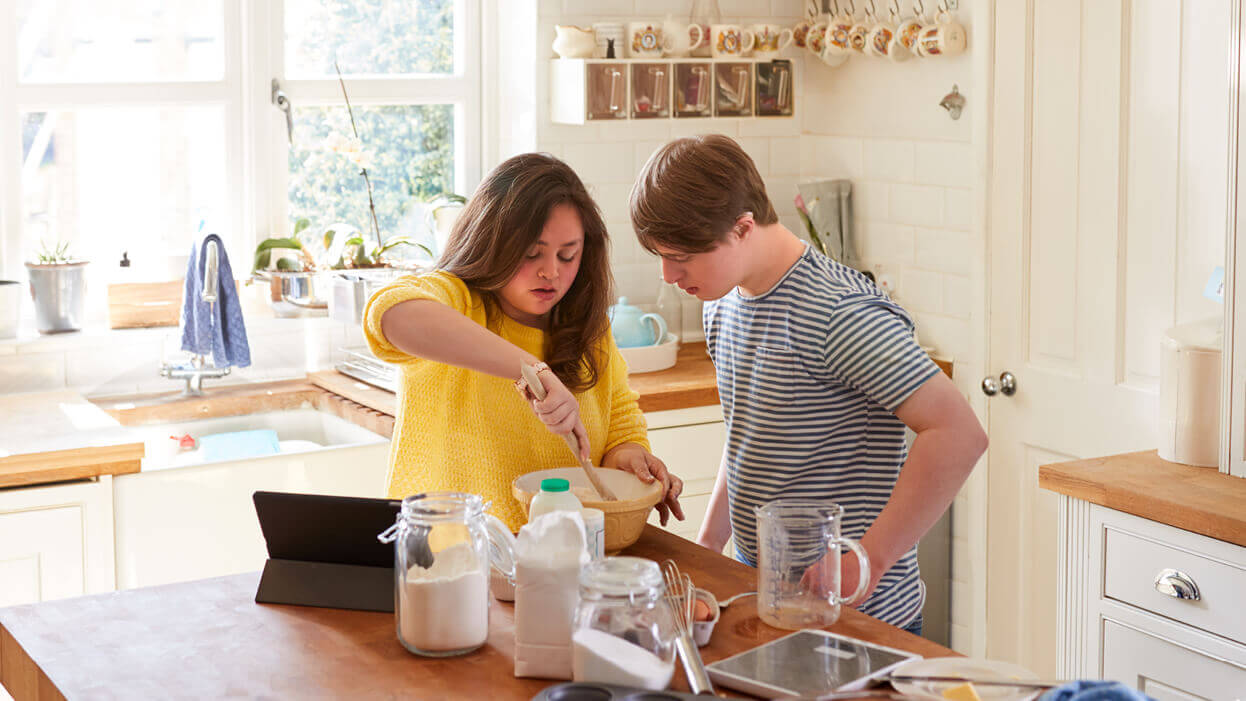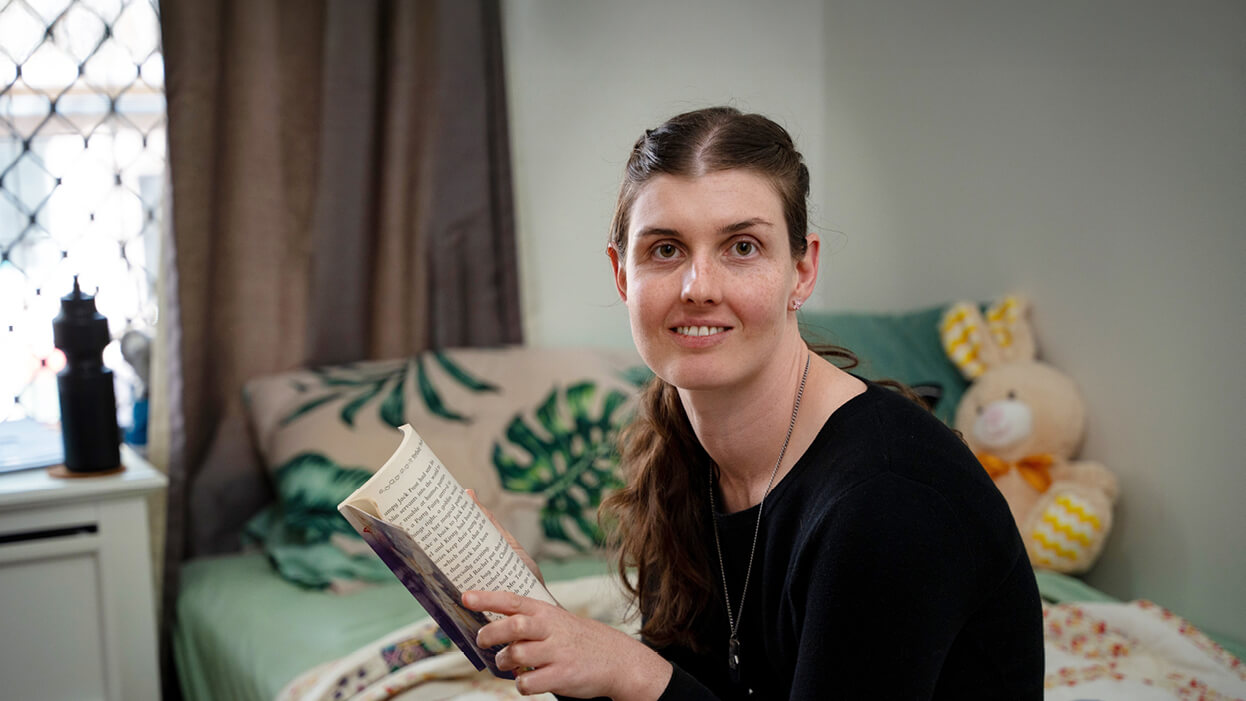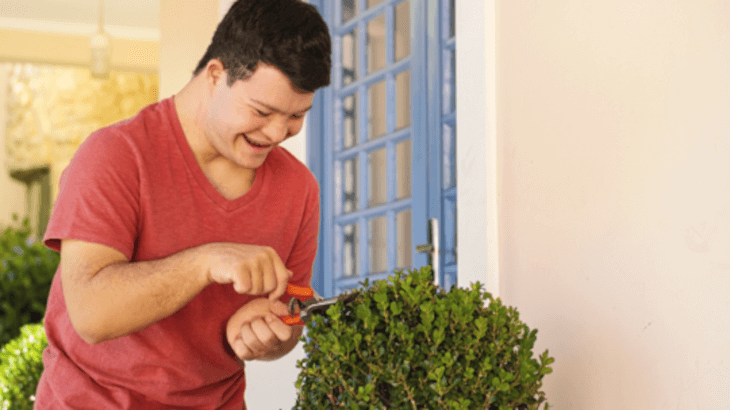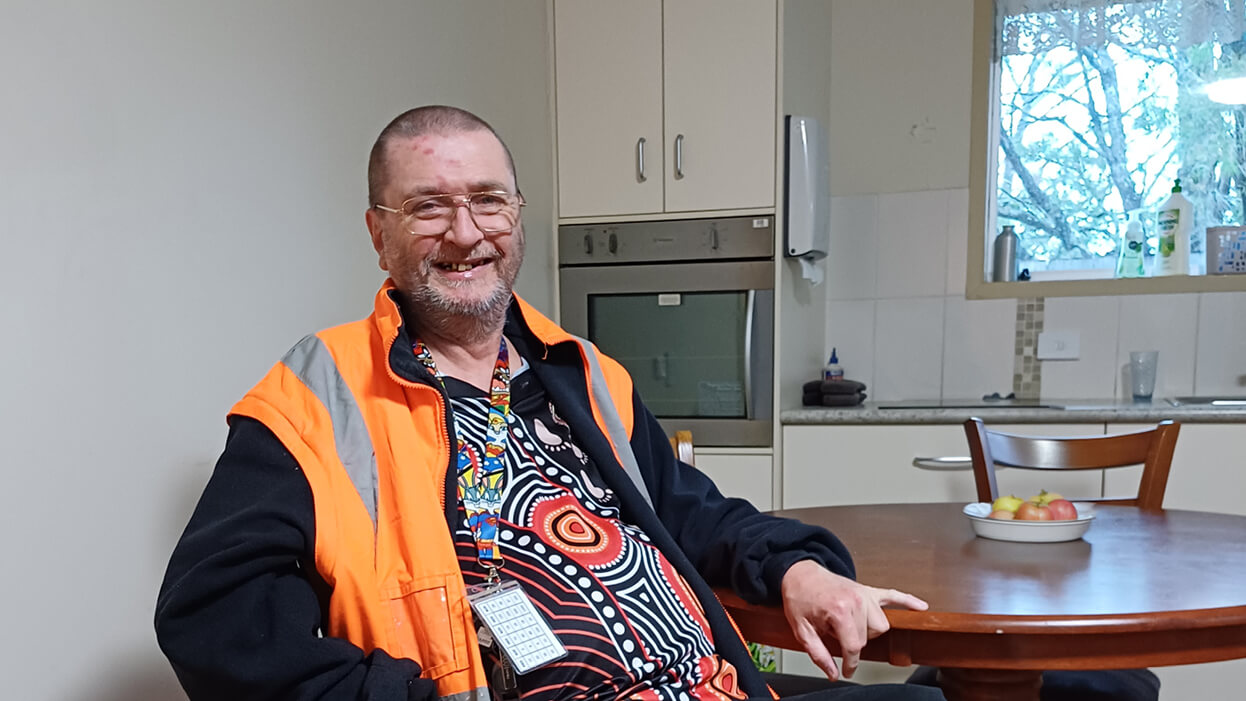An accessible home is beyond wheelchair ramps and railings. An accessible home is a safe space, full of comforts and independence. Everyone deserves a home that is safe, suitable and affordable. In fact, it’s a human right! The reality is, many people with disability have experienced living somewhere that doesn’t work for them.
Where and how we live has a huge impact on other areas of our lives. Living far away from work or medical services makes life harder and more expensive in relation to transport costs and time on the road. When a home is not accessible, every activity such as using the kitchen or going to the bathroom can be an obstacle for people with disability.
While these daily challenges can help people build problem-solving skills to get on with life, the downstream effect is often a negative impact on their mental and physical health.
Accessible home standards
Livable Housing Australia (LHA) has published the Livable Housing Design Guidelines. Which set out a range of standards ranging from silver to platinum. The guide contains guidance on how to provide accessible housing.
What should an accessible home have?
A home will have many occupants with a variety of needs over its lifetime. Accessible homes can deliver housing that adapts to people's needs. An accessible home is not only about how it is built. It is also the location, support, technology and the independence it provides.
Location
An accessible home is centrally located, close to services and local community amenities. Accessibility allows people with disability to enjoy community connection and inclusion.
All Endeavour Foundation homes must meet an additional set of requirements. Homes must have access to public transport and be within a 5km radius of Endeavour Foundation work and community services.
Support
We know everyone is unique. Some people are confident in the kitchen and some people are developing their skills. Access to the right support helps create an accessible home.
We are here to help people with disability choice and control. Our staff are passionate, consistent and dedicated to providing the level of security and support that makes living out of home possible. When you move in with us, you get independence and your family gets the confidence that comes with 24/7 support.
Technology
In ways never before imagined possible, smart technology is changing the way people with disability live. An accessible home no longer just means ramps, wide doorways and grab bars. Technology and disability now go hand-in-hand. Assistive technology can help increase people with disability's independence, safety, and control.
How to start your home accessibility journey
You aren’t expected to navigate this all alone. A great place to start is with your support people. Your Support Coordinator and Health Professionals, like an Occupational Therapist can help make sure you get the right supports for you and your needs.
There are many resources you can access, which may be funded by the NDIS. Some of these are changes to your home, like home modifications or assistive technologies.
Home Modifications
Home modifications are changes to the structure, layout or fittings of your home, so participants can safely access and move around comfortably. The NDIS can fund home modifications to make a participant's home accessible.
Home modifications can range from minor to complex changes.
Minor home modifications do not change structural parts of the home or cost more than $20,000.
Complex home modifications are changes involving a few areas of the home. For example, combining the bathroom and toilet for more room to use a hoist or shower chair.
In some circumstances, the NDIA may fund reasonable and necessary supports that are related or incidental to home modifications. The NDIS has resources to better understand home modifications, including how to access them.
Supported Independent Living (SIL)
Supported independent living provides 24/7 support for people with disability who live together in shared homes. This enables people using SIL to open the door to greater self-reliance and more empowered living. It includes things like having a person to help with personal care tasks, or cooking meals.
Assistive Technology
Assistive Technology (AT) is equipment or devices that help you do everyday tasks. AT may help complete tasks more easily or safely. The NDIS funds assistive technology but remember, all supports must meet the reasonable and necessary criteria.
The NDIS does not fund AT items that are more appropriately funded by other government services.
Accessible housing is better for everyone
At its core, accessible housing helps people become more independent. This doesn’t just benefit people with disability, it benefits all Australians.
Here at Endeavour Foundation, we know how much accessible housing matters. And we’re doing something about it.
Our My Home, My Life initiative aims to shed light on the chronic housing shortage facing Australians with disability and take real action to tackle this issue. Endeavour Foundation is investing $45m over 4 years to tackle the shortage of accessible homes. On top of this, a further 26 homes will be fully renovated to the same high standards.
Live the life you want in a home you love. As a leader in Supported Independent Living, we’ve helped hundreds of people turn their dreams of living independently into a reality.
 Donate
Donate
 Lotteries
Lotteries



